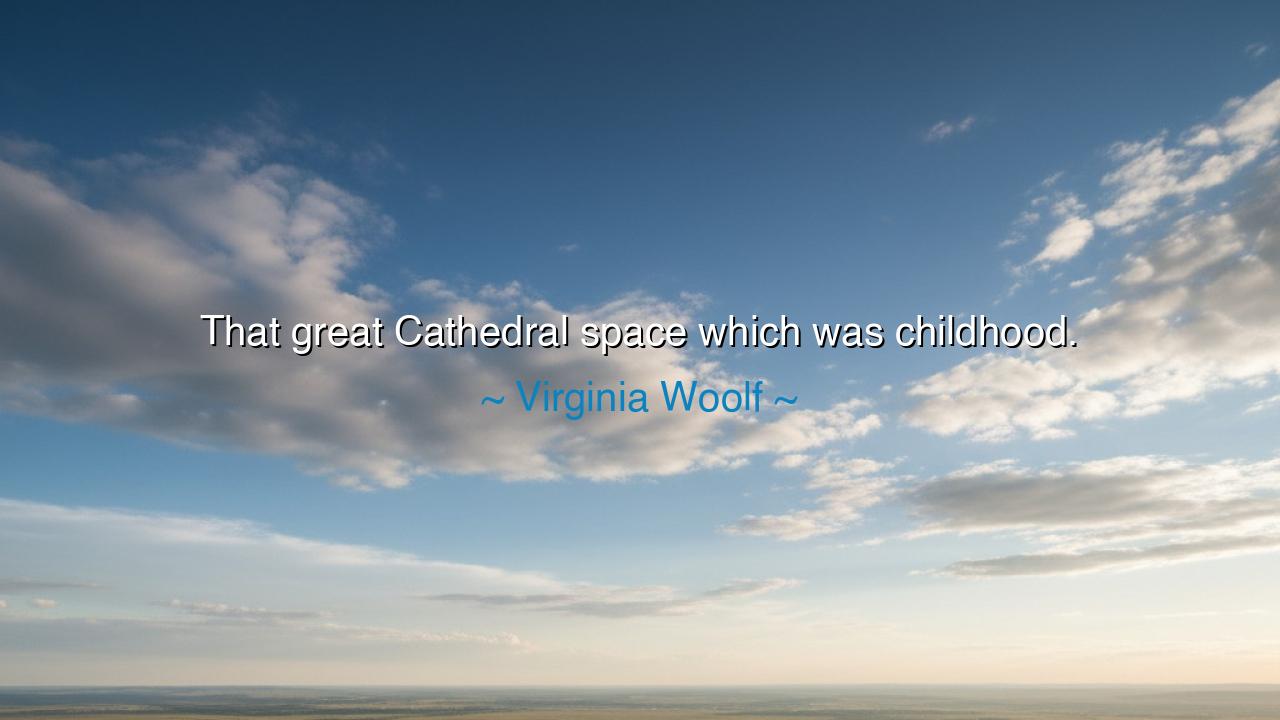
That great Cathedral space which was childhood.






Hear the tender yet profound words of Virginia Woolf, who gazed inward and declared: “That great Cathedral space which was childhood.” With this image she lifts the memory of our earliest years beyond the realm of mere recollection and into the grandeur of sacred architecture. For to her, childhood is not a narrow corridor of time, but a vast and holy hall, filled with echoes of wonder, mystery, and light. It is the sanctuary of the soul’s beginning, where every sound resounds like a hymn and every sight shines like stained glass before the eyes of innocence.
The image of the Cathedral is no idle ornament. A cathedral is built to overwhelm the senses, to draw the heart upward toward awe, to remind the faithful of mysteries greater than themselves. So too is childhood, when the world itself appears immense, when each day is an unfolding miracle, when the smallest stone or insect glows with secret majesty. In that time, hours stretch wide like vaulted ceilings, and years seem to carry the weight of eternity. It is no accident that poets and sages often return to those early visions, for they carry within them the first whispers of wonder.
Consider the tale of the young Isaac Newton, who as a boy on his family farm watched the fall of apples and the dance of the stars. In his youth, the world was still a Cathedral space, where questions rose like incense and curiosity rang like bells. From that vastness of wonder, he carried the seeds that would grow into the laws of motion and the understanding of gravity. It was his childhood awe, preserved into manhood, that opened doors to the heavens.
And yet, as Woolf reminds us, this space is not eternal. The Cathedral of childhood is often dimmed by the burdens of adulthood—by worries, by duties, by the narrowing of vision into profit and loss. Many forget the vastness they once inhabited. Where once was wonder, there grows weariness; where once was awe, there arises apathy. Her words are both elegy and warning: to lose the Cathedral is to lose a part of the soul.
Still, the Cathedral does not wholly vanish; its stones remain in memory, and its echoes linger in the imagination. Artists, dreamers, and mystics are those who learn to return to that space, to walk once more beneath its arches and let their spirit be lifted. Think of William Blake, who saw angels in the trees of Peckham Rye, his childhood visions guiding his poetry into realms that others could not see. His gift was not new sight, but the preservation of ancient sight—the sight of a child who still lived in the Cathedral.
What lesson then shall we take from Woolf’s words? It is this: guard the wonder of your childhood. Do not let the Cathedral be forgotten in the dust of daily life. Remember the awe with which you once looked at the stars, the joy with which you once welcomed morning, the infinite space that once dwelled in a single hour of play. Practical actions follow: seek silence as you once did, without fear; look upon small things with reverence; ask questions not merely to answer them, but to keep the flame of curiosity alive.
Thus, let us cherish Woolf’s vision: “That great Cathedral space which was childhood.” For in truth, the Cathedral is not only behind us but within us, waiting to be entered again. Let us teach our children to guard their wonder, and let us, even as adults, walk back through its doors with humility. For he who preserves the heart of a child preserves the key to the sacred, and he who remembers the Cathedral will never walk in darkness, but always beneath the arches of wonder and light.






AAdministratorAdministrator
Welcome, honored guests. Please leave a comment, we will respond soon